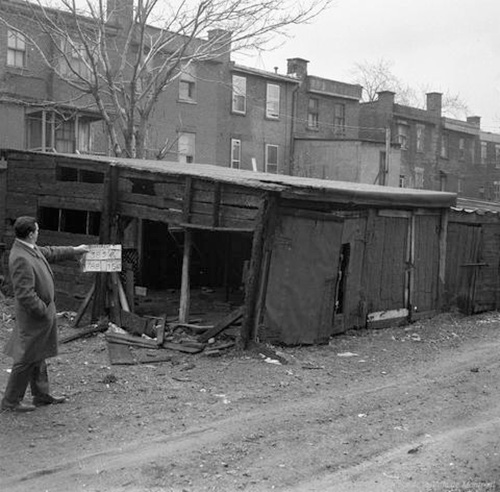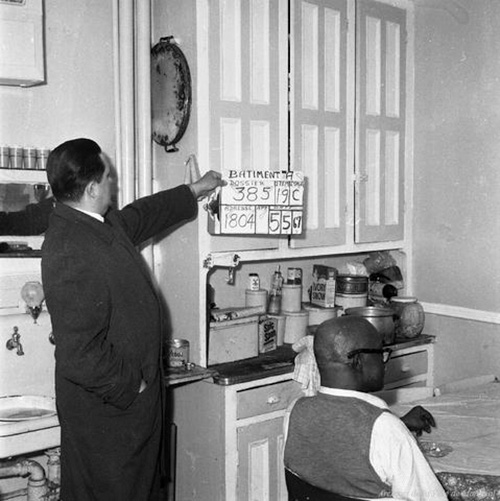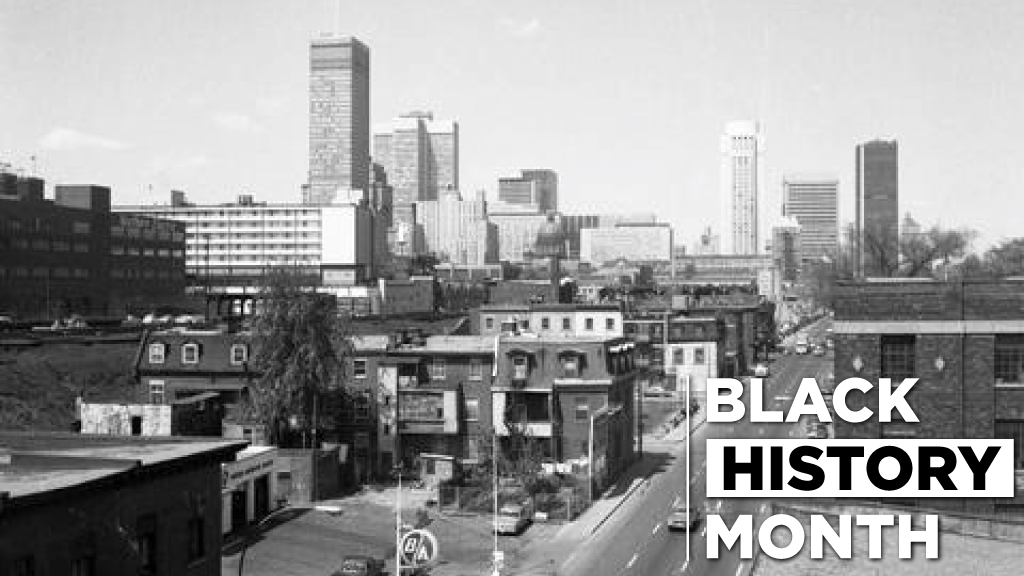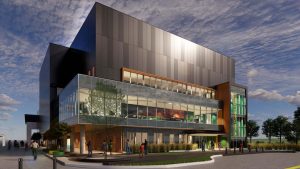From the late 1800s up through the first half of the 20th century, Montreal’s Little Burgundy in the city’s West End was home to a thriving Black-Anglo community with robust social service traditions, employment centred around two train stations and a jazz scene that drew the greats from Harlem, Detroit and elsewhere.
But various economic disruptions including the rise in automobile usage and the demise of railway travel in the ‘40s and ‘50s led to the community’s decline. In the 1960s, construction of the Ville-Marie Expressway through the heart of the neighbourhood and massive urban renewal led to the Black community’s evisceration. A thousand buildings were torn down and by the end of the decade many Black businesses and residents had been dispersed.
The community, once home base to 90 per cent of the city’s Black residents, was home to scarcely two per cent of all Blacks in Montreal by 1996.
Today Little Burgundy has a radically different profile as one of the most ethnically diverse communities on the Island of Montreal, with over 83 different ethnicities identified.
history professor Steven High is among the foremost chroniclers of the heyday of Little Burgundy as a Black-Anglo community. His 2017 paper titled Little Burgundy: The Interwoven Histories of Race, Residence, and Work in Twentieth-Century Montreal is the seminal work on the topic, and he followed it up with a 2022 book published by McGill-Queen’s University Press, titled Deindustrializing Montreal, Entangled Histories of Race, Residence, and Class.
He wrote, “The geographic dispersal of the Anglo-Black community, and the undermining of Black-owned businesses and institutions, weakened their contemporary link to Little Burgundy just as its historical presence finally became firmly established in public consciousness.”
High noted it was only during the urban renewal phase that the West End area close to Windsor and Bonaventure train stations, between Saint-Henri and Griffintown, became known as Little Burgundy – in French, La Petite Bourgogne.
“By then,” he wrote, “the state had imposed a prescription to a problem that failed to consider the particularities of the Black community, tearing asunder a social fabric that had served Black Montrealers well.”
Cornerstone Institutions
During the first half of the 1900s, most Black men in Montreal worked for the railways as sleeping car porters, dining car employees and red caps.
With their partners often away for weeks, Black women assumed an outsized role in the social fabric, High said in an interview.
There were four “cornerstone” supports: the Negro Community Centre, providing cradle to grave services, especially for children; the United Union Church; the Universal Negro Improvement Association, a breeding ground for Marcus Garveyite activism whose best-known member was Louise Langdon, mother of Malcolm X; and the Coloured Women’s Club.

There may not have been the legal segregation to the degree experienced in the U.S., High said, but there was widespread de facto segregation.
“In Little Burgundy, because you have this context, where there is racism, not everybody’s going to employ Black people, not everyone’s going to serve Black people, Black institutions become really important to creating a safe space…where people can feel proud and they’re not constantly in danger of being humiliated,” said High.
The Union Church website recalls how jazz legends Oscar Peterson and Oliver Jones “were nurtured and developed within Union’s walls.” Jones was five years old when he played for his first live audience — the Union United Church congregation.
Many of the jazz clubs were in close proximity. Rufus Rockhead was said to be the first Black man to get a liquor licence in Montreal and his Rockhead’s Paradise was a mainstay. U.S. entertainers Nat King Cole, Redd Foxx and Dizzy Gillespie regularly made the trip north.
The porter community, now better appreciated thanks to CBC’s The Porter, had its own unique traditions. High noted U.S. scholar Sarah-Jane Mathieu has postulated that well-travelled Black porters helped produce a “powerful diasporic consciousness” in North America, which in Montreal led to unionization. And retirement rituals for Little Burgundy porters often involved large gatherings of friends, family and union colleagues to greet the worker as he arrived at the station after his final run.
Another source of insights into the flavour of the neighbourhood came from interviews conducted by students High sent into the community.
“We have been building up the history from the ground up, and trying to get the bigger story through a lot of little stories,” said High.
Racism or Socioeconomics?
High said a familiar urban development theme of the last century outlined how racial minorities suffered from the “radical restructuring of North American cities.”
But the storyline does not exactly fit what happened in Little Burgundy, he said.
Given that Little Burgundy was not broadly recognized by governments as having a Black concentration of population — there was a minority Black population among whites, concentrated in the northeast of the sector — until the late 1960s, High noted, its swift demise cannot be attributed largely to racism, as in Africville in Halifax.

Rather the decline was due to multiple socioeconomic factors.
Among the diverse changes, he writes, the shift away from railway transportation to transport trucks favoured suburban locations with easy access to highways. Large numbers of Blacks were laid off as passenger train use diminished, and across the city “new highways were built to bring white suburban workers and consumers downtown,” the Ville-Marie Expressway being one example.
Meanwhile, some Blacks were also moving to the suburbs.
Quiet Revolution taking place
“I started to realize that what’s actually happening was, this is the Quiet Revolution, you’ve got Quebec politicians wanting to uplift that francophone working class,” said High.
“Now, the impact of this is huge on the Black community. And so you could still argue that the invisibility of that Black minority is sort of racism, right? Because you’re not even valuing that community.”
Much of the Black community was in the northern half of Little Burgundy, the area targeted for the highway.
“Then the rest of the neighbourhood underwent urban renewal on a massive scale,” High wrote, noting Little Burgundy was “cast as an urban slum in need of state intervention.”
Little Burgundy has gone through many evolutions in the last half-century. But today the past traditions of the Black English community are well recognized with murals, signage, walking tours and more. The Little Burgundy Coalition, Union Church, Black Theatre Workshop and other agencies all pay respect to the community’s unique heritage.
Asked what went wrong, High suggested one failure was the lack of recognition for the social networks that existed.
“You don’t want to romanticize poverty,” said High. “That said, if there’s going to be change, how are you going to manage that change?
“The black community in Little Burgundy in 1965, it was like a web. And so if you’re going to demolish much of that neighbourhood, you’re not even aware of that. That’s a problem.
“Building that into our thinking, we’re not just building buildings, we’re building community. So we need to have an understanding of what these places are and what they mean.”











Recent Comments
comments for this post are closed